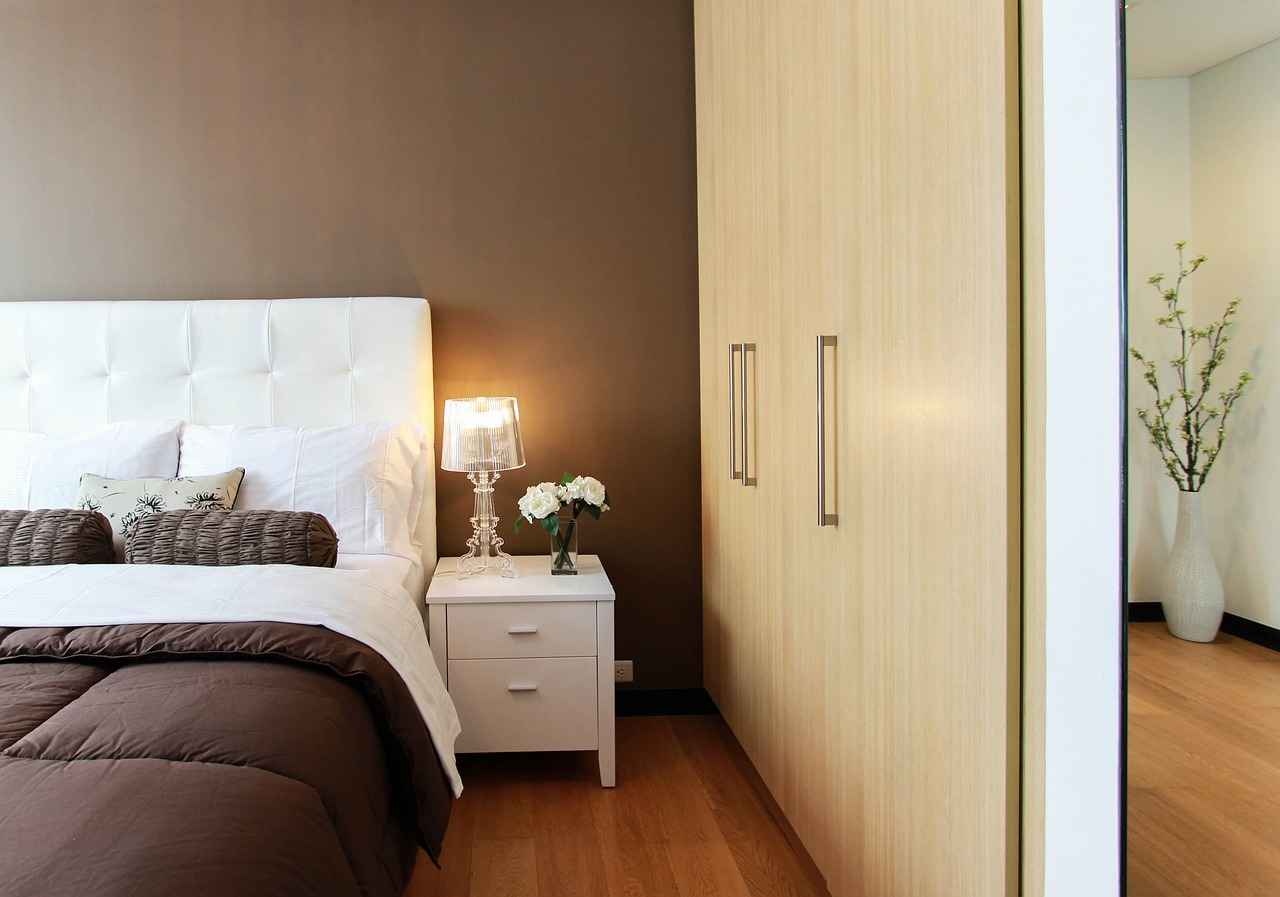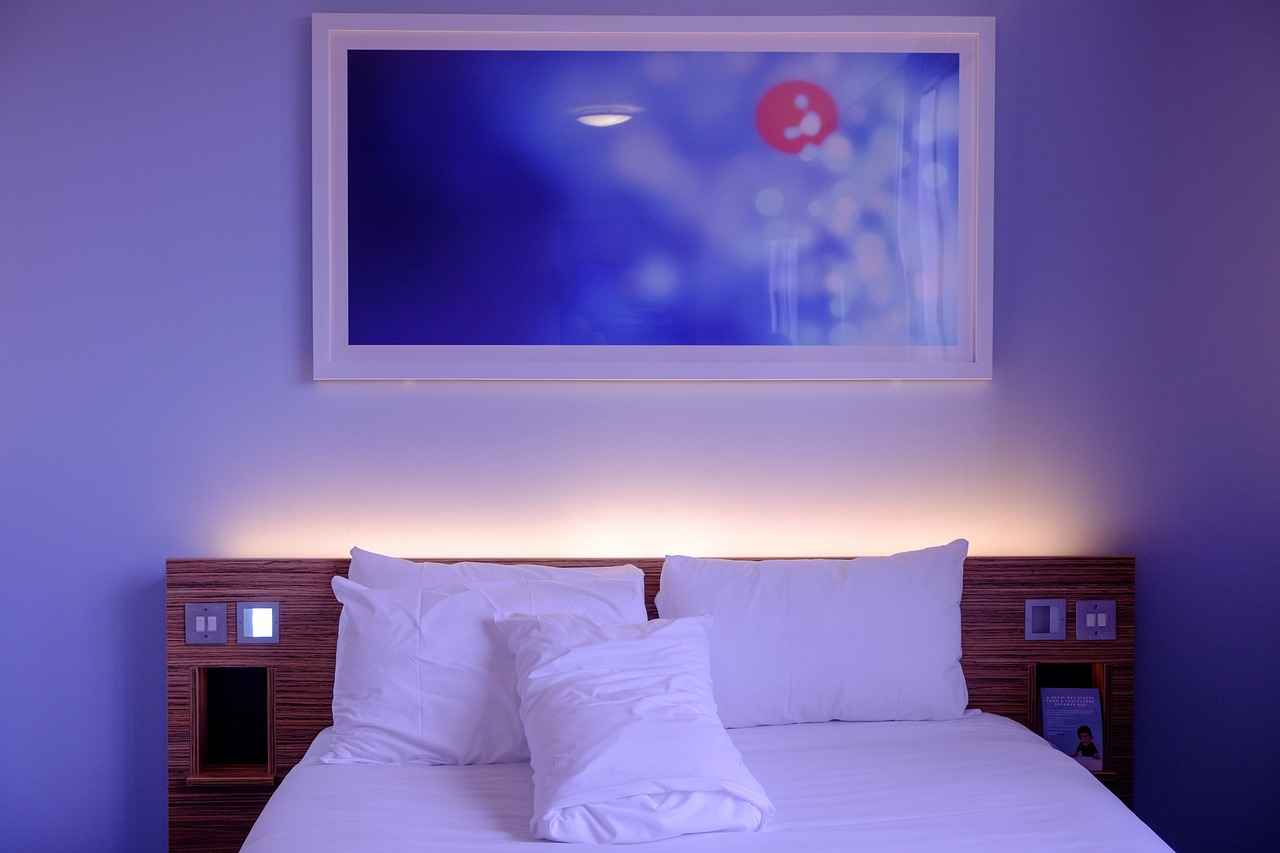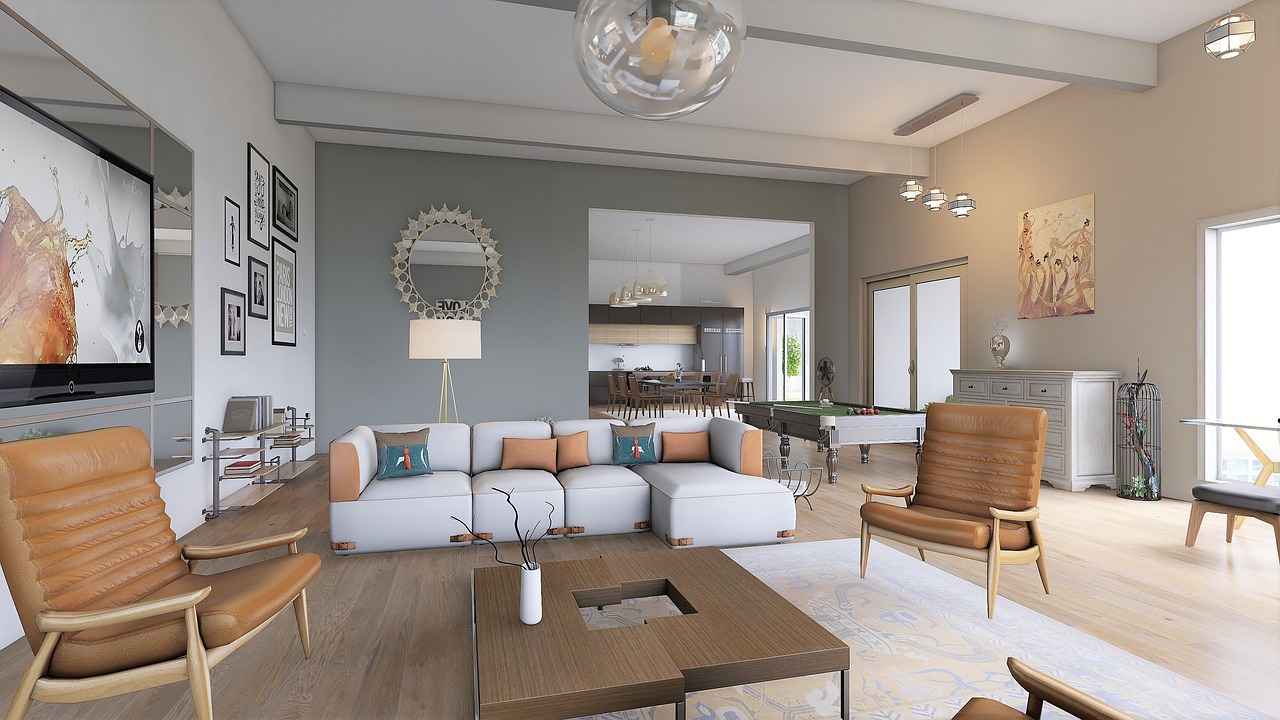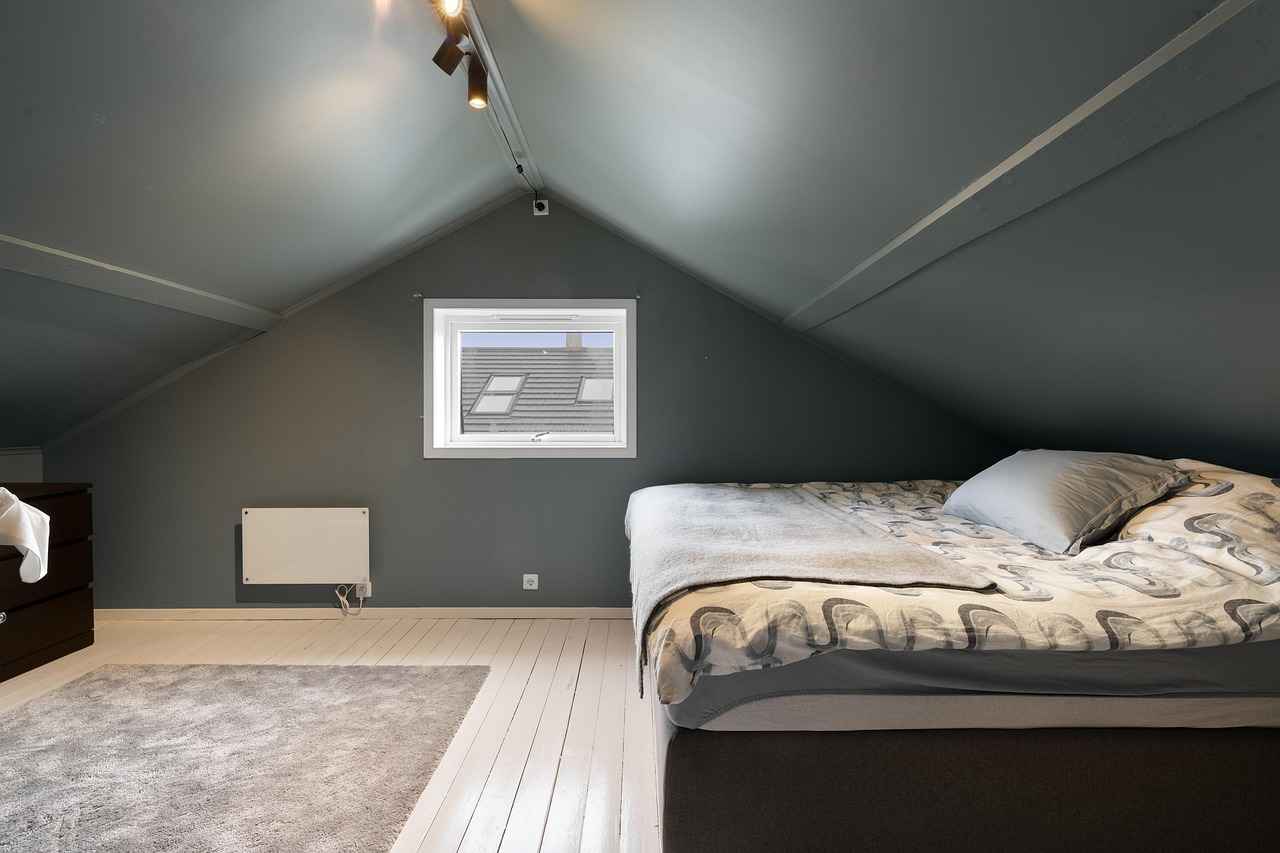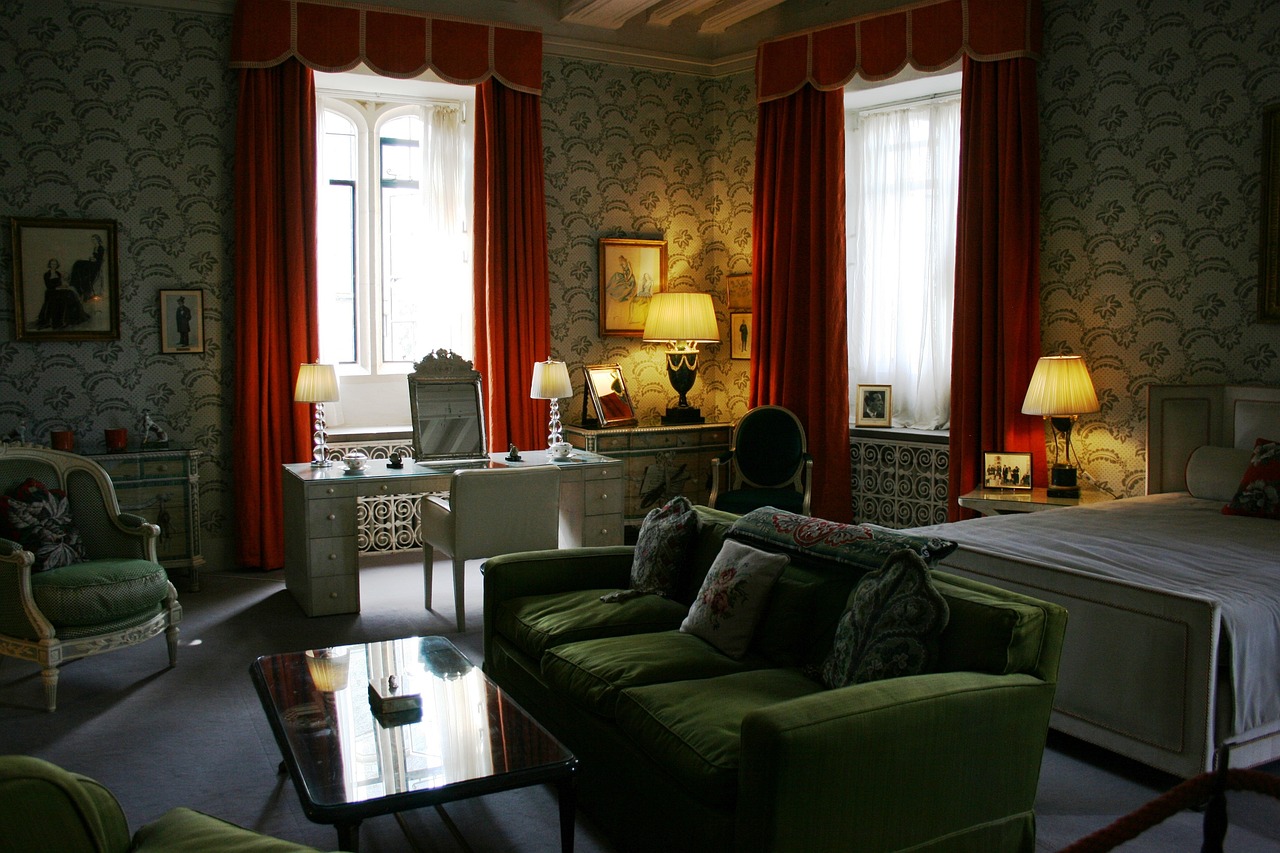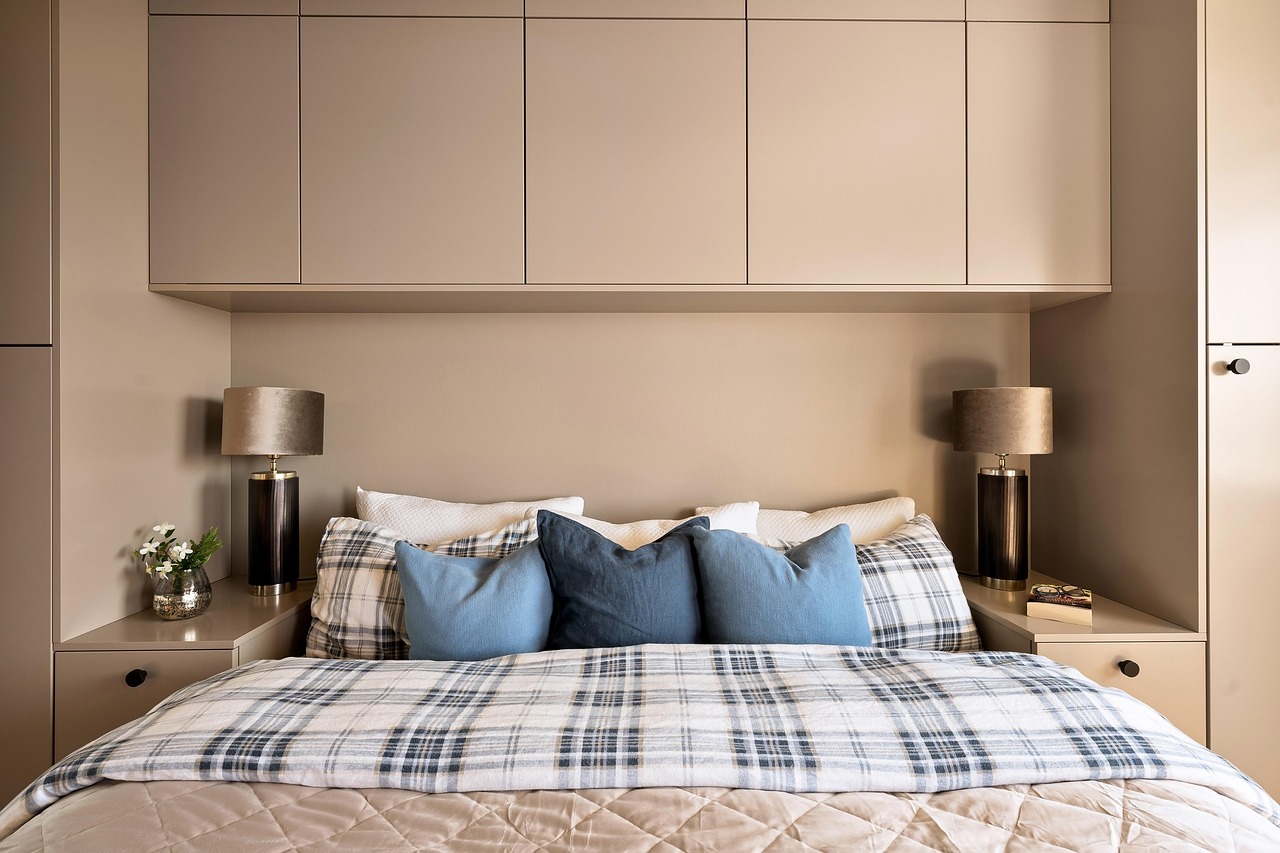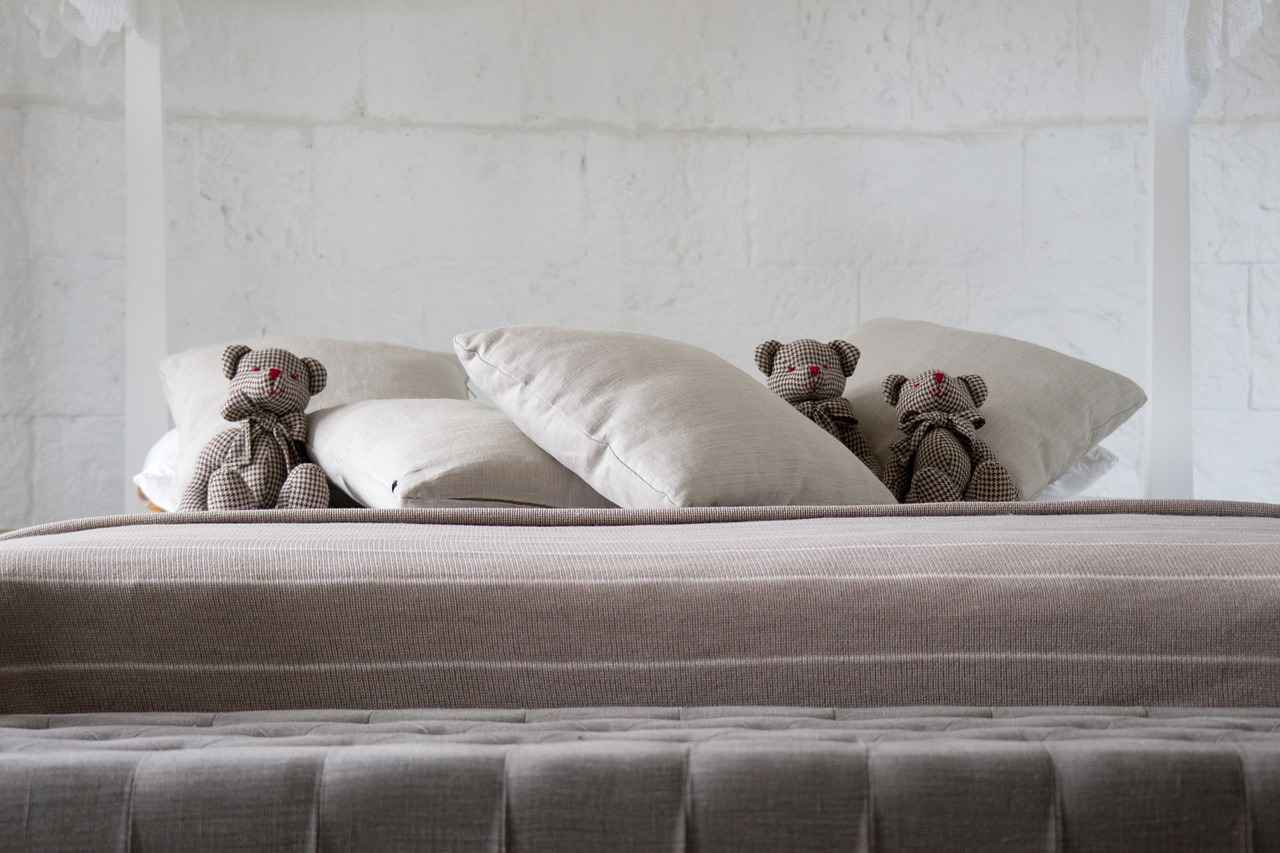As we step into 2025, the landscape of bed design is evolving, showcasing a blend of innovation, sustainability, and personalization. This article explores the latest trends in materials, aesthetics, functionality, and eco-friendliness, providing a comprehensive overview of what consumers can expect in the coming year.
Innovative Materials in Bed Design
The introduction of advanced materials is significantly transforming bed design. Manufacturers are increasingly utilizing sustainable woods, organic fabrics, and high-performance composites. These materials not only enhance the aesthetic appeal but also improve durability and comfort. Consumers are now more inclined to invest in beds that reflect their values regarding sustainability and health.
Smart Beds: The Future of Sleep Technology
In 2025, smart beds are set to redefine our sleep experience. Equipped with cutting-edge technology, these beds monitor sleep patterns and adjust their firmness to cater to individual preferences. This innovation promotes better health and wellness, making sleep more restorative.
- Integration of Sleep Tracking Features: Many smart beds now incorporate sleep tracking capabilities, providing users with valuable insights into their sleep quality. This data empowers individuals to make informed decisions for improved health.
- Data-Driven Sleep Improvement: By analyzing sleep data, users can identify patterns and make necessary adjustments, leading to enhanced rest and overall well-being.
- Personalized Comfort Settings: Smart beds can adjust firmness and temperature based on personal preferences, ensuring a tailored sleeping experience.
- Connectivity with Smart Home Systems: The integration with home automation systems allows seamless control over bedroom environments, enhancing convenience and comfort.
Minimalist Designs: Aesthetic Appeal
The minimalist design trend continues to gain traction, characterized by clean lines and simplicity. These designs emphasize functionality without sacrificing style, appealing to modern aesthetics. Neutral color palettes dominate this trend, creating a calming atmosphere that enhances the bedroom’s overall aesthetic.
- Multi-Functional Furniture: Beds that double as storage solutions or seating areas are increasingly popular, offering practicality for smaller living spaces.
Sustainable Bed Designs
With growing environmental awareness, consumers are seeking eco-friendly bed designs. This section explores sustainable materials and practices that prioritize environmental responsibility.
- Use of Recycled Materials: Many manufacturers are now incorporating recycled materials into their bed designs, reducing waste while maintaining quality.
- Ethical Sourcing Practices: Ensuring materials are sourced ethically respects both the environment and labor rights, making sustainable beds a responsible choice.
Customization Options for Personalization
As consumers seek unique expressions of their style, customization options in bed designs are on the rise. Offering tailored dimensions and styles allows individuals to find the perfect fit for their spaces, enhancing satisfaction with their purchases.
- Choice of Fabrics and Finishes: A variety of fabric and finish options enable consumers to create a unique look that complements their bedroom décor.
Health and Wellness Features in Bed Design
Modern beds are increasingly designed with health and wellness features that promote better sleep quality and overall well-being.
- Adjustable Bases for Comfort: Adjustable bed bases allow users to find their ideal sleeping position, reducing discomfort and enhancing sleep quality.
- Hypoallergenic Materials: Beds constructed with hypoallergenic materials help reduce allergens and improve air quality, making them a great choice for allergy sufferers.
As we look forward to 2025, the bed design industry is poised to offer innovations that cater to the evolving needs of consumers. With a focus on sustainability, technology, and personalization, the future of bed design promises to enhance our sleep experience in remarkable ways.
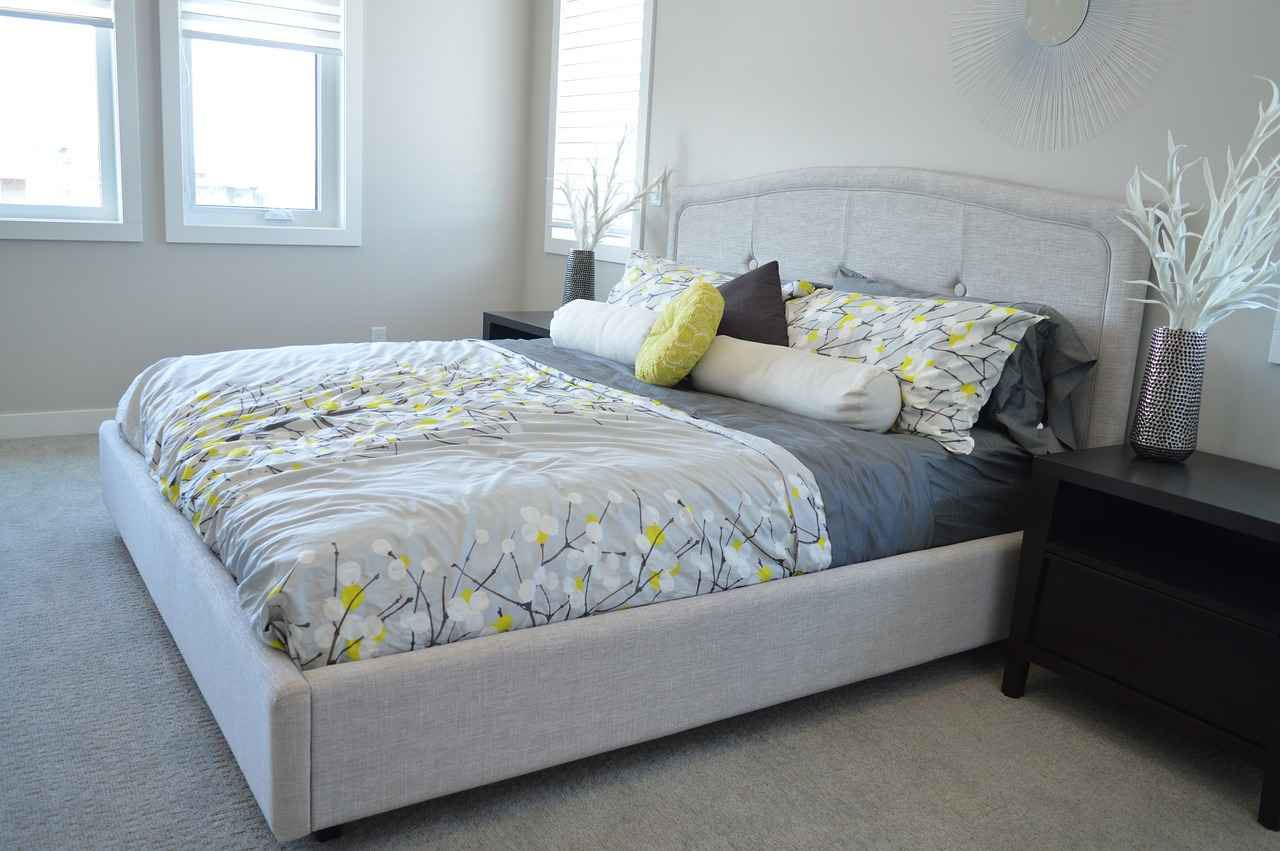
Innovative Materials in Bed Design
In the evolving landscape of interior design, bed design stands out as a focal point of innovation. As we approach 2025, the integration of innovative materials is reshaping how we perceive and utilize beds, enhancing not only their functionality but also their aesthetic appeal. This article explores the latest trends in materials that are revolutionizing bed design, making them more durable, comfortable, and environmentally friendly.
The use of new materials is transforming bed design. From sustainable woods to advanced composites, these innovations enhance durability, aesthetics, and comfort, making beds more appealing to modern consumers. The shift towards eco-friendly materials is not just a trend; it reflects a growing awareness of environmental responsibility among consumers.
- Sustainable Woods: Materials such as bamboo and reclaimed wood are gaining popularity due to their low environmental impact. Bamboo, for instance, is a rapidly renewable resource that offers excellent strength and durability.
- Advanced Composites: These materials combine natural and synthetic fibers to create beds that are not only lightweight but also highly durable. They can withstand wear and tear while maintaining an appealing aesthetic.
- Memory Foam and Gel Infusions: These materials provide exceptional comfort and support, adapting to the body’s shape and temperature, which enhances sleep quality.
- Recycled Materials: Many manufacturers are now incorporating recycled plastics and metals into their designs, promoting sustainability without compromising on quality or style.
These materials are not just functional; they also contribute to the overall aesthetic appeal of the bed. The combination of textures and finishes available today allows designers to create visually stunning pieces that serve as the centerpiece of any bedroom.
Beyond aesthetics, the innovations in materials significantly enhance the comfort and durability of beds. For example, beds made from high-density foam and advanced latex offer superior support, reducing pressure points and promoting better sleep posture. Moreover, the durability of these materials ensures that beds can withstand years of use without losing their structural integrity.
- Ergonomic Design: The use of innovative materials allows for ergonomic designs that cater to various sleeping positions, ensuring that everyone can find their ideal comfort.
- Moisture-Wicking Fabrics: Incorporating moisture-wicking and breathable fabrics helps maintain a comfortable sleeping environment, further enhancing sleep quality.
As consumers become more environmentally conscious, the demand for sustainable bed designs is on the rise. Manufacturers are responding by creating products that not only meet aesthetic and comfort needs but also adhere to ethical sourcing practices.
- Ethical Sourcing: Many brands are committed to sourcing materials responsibly, ensuring that their production processes do not harm the environment or exploit workers.
- Certifications: Look for beds that come with certifications such as FSC (Forest Stewardship Council) or GREENGUARD, which indicate that the materials used are environmentally friendly.
In conclusion, the future of bed design is being shaped by innovative materials that prioritize comfort, durability, and sustainability. As we move into 2025, consumers can expect to see more options that not only enhance their sleeping experience but also align with their values and lifestyle choices. The integration of new materials is setting the stage for a revolution in how we think about and design our sleeping spaces.

Smart Beds: The Future of Sleep Technology
Smart beds are leading a significant transformation in the way we approach sleep. As technology continues to advance, these innovative products are becoming essential for those seeking enhanced health and wellness through improved sleep quality. By integrating sophisticated features that monitor and adapt to individual sleep patterns, smart beds are tailored to meet the unique needs of each user.
One of the most compelling aspects of smart beds is their sleep tracking capabilities. These systems collect data on various factors such as sleep duration, quality, and even movements during the night. By analyzing this data, users gain valuable insights into their sleep habits, allowing them to make informed adjustments to their routines. For instance, if a user frequently wakes up during the night, the bed can suggest changes to their sleep environment or habits to enhance restfulness.
With the ability to analyze sleep data, smart beds empower users to identify patterns that may be affecting their sleep quality. This data-driven approach enables them to make necessary adjustments to their sleep environment—be it changing the room temperature or altering bedtime routines—leading to a more restorative sleep experience. The result is not only better rest but also improved overall health and well-being.
Personalization is a hallmark of modern smart beds. These beds can adjust their firmness and temperature based on individual preferences. For example, a user who prefers a firmer surface can set their bed accordingly, while another who enjoys a softer feel can adjust the settings to their liking. This level of customization ensures that every sleeper can find their ideal comfort level, promoting deeper and more satisfying sleep.
The integration of smart beds with smart home systems enhances the overall user experience. This connectivity allows users to control various aspects of their bedroom environment—from lighting to temperature—directly from their smart bed. Imagine waking up to a gradual increase in light and a gentle rise in bed position, all programmed to align with your natural sleep cycle. Such features not only enhance convenience but also contribute to a more harmonious sleep environment.
Beyond just comfort, smart beds are increasingly designed with health and wellness in mind. Features such as adjustable bases allow users to find their ideal sleeping position, which can be particularly beneficial for those with specific health concerns like acid reflux or back pain. By elevating the head or feet, these beds can alleviate discomfort and promote better sleep quality.
Many smart beds are constructed using hypoallergenic materials, which help reduce allergens and improve air quality. This is especially important for individuals with allergies or respiratory issues. By choosing a bed made from these materials, users can sleep easier knowing they are minimizing exposure to potential irritants.
The future of smart beds looks promising, with ongoing advancements in technology. Features such as AI-driven sleep coaching and integration with health monitoring devices could further enhance the sleep experience. Imagine a bed that not only tracks your sleep but also provides personalized recommendations based on your health data collected throughout the day. This level of interaction could revolutionize our understanding of sleep and its impact on overall health.
In summary, smart beds are not just a trend; they represent a significant evolution in sleep technology. By focusing on individual needs through advanced features like sleep tracking, personalized comfort settings, and health-oriented designs, these beds are reshaping how we think about rest and rejuvenation. As we move into the future, the continuous integration of technology in our sleeping environments promises to enhance our health and well-being, making quality sleep more accessible than ever.
Integration of Sleep Tracking Features
As the demand for better sleep solutions continues to rise, the integration of sleep tracking features in smart beds has emerged as a significant trend. This technology not only enhances the sleeping experience but also empowers users with valuable insights into their sleep patterns, leading to improved health and well-being.
Many modern smart beds are equipped with sophisticated sensors that monitor various aspects of sleep, including duration, quality, and sleep stages. This data is then analyzed and presented to users through intuitive mobile applications or digital displays. Users can access detailed reports that highlight their sleep cycles, enabling them to identify trends and make informed decisions about their sleep habits.
One of the key benefits of sleep tracking technology is its ability to provide users with personalized recommendations. For instance, if the data indicates frequent disturbances during the night, users might consider adjusting their bedtime routine, optimizing their bedroom environment, or even modifying their dietary habits. This data-driven approach fosters a deeper understanding of individual sleep needs, ultimately guiding users towards healthier sleep practices.
| Sleep Data Insights | Potential Recommendations |
|---|---|
| Frequent awakenings | Consider a consistent sleep schedule |
| Insufficient deep sleep | Limit screen time before bed |
| High heart rate during sleep | Incorporate relaxation techniques |
Furthermore, the integration of sleep tracking features allows for seamless connectivity with other smart home devices. For example, some smart beds can communicate with smart thermostats to adjust room temperature based on the user’s sleep cycle. This automation ensures that the sleeping environment remains optimal throughout the night, enhancing overall comfort and promoting restorative sleep.
In addition to physical adjustments, the insights gained from sleep tracking can also encourage lifestyle changes. Users may find that certain activities, such as exercise or caffeine consumption, significantly impact their sleep quality. By becoming more aware of these factors, individuals can make conscious decisions that contribute to better sleep hygiene.
Moreover, the growing trend of integrating sleep tracking with health monitoring technologies is noteworthy. Many smart beds can sync with wearable devices, allowing for a comprehensive overview of a user’s health and wellness. This holistic approach not only focuses on sleep but also considers overall physical health, making it easier for users to achieve their wellness goals.
In summary, the integration of sleep tracking features in smart beds represents a remarkable advancement in sleep technology. By providing detailed insights into sleep patterns and offering personalized recommendations, these innovations empower users to take control of their sleep health. As technology continues to evolve, we can expect even more sophisticated features that further enhance our understanding of sleep and its critical role in our overall well-being.
Data-Driven Sleep Improvement
In today’s fast-paced world, achieving quality sleep has become more crucial than ever. With the rise of technology, particularly in the realm of smart beds, users have unprecedented access to data that can significantly improve their sleep quality. One of the most impactful aspects of these innovations is the ability to analyze sleep data, which can lead to enhancements in sleep environments and overall well-being.
Sleep data encompasses various metrics, including sleep duration, sleep cycles, heart rate, and even environmental factors such as room temperature and noise levels. By utilizing advanced sleep tracking technology, users can gain insights into their sleep patterns. This data is crucial for identifying problematic trends that may be affecting rest quality.
Through consistent monitoring, users can pinpoint specific patterns in their sleep behavior. For instance, they may discover that they sleep better on certain nights or after specific activities. Recognizing these patterns allows individuals to make informed adjustments to their sleep routine. For example, if a user notices that they sleep poorly after consuming caffeine in the afternoon, they can modify their intake to improve their rest.
Once users have analyzed their sleep data, they can make necessary adjustments to their sleep environments. This might include:
- Optimizing Room Temperature: Studies suggest that a cooler room can promote better sleep. Users can adjust their thermostat based on the data collected.
- Reducing Noise Levels: If sleep data indicates frequent awakenings due to noise, users might consider soundproofing their bedrooms or using white noise machines.
- Improving Mattress Comfort: Many smart beds allow users to adjust firmness levels. By analyzing sleep data, users can find the optimal setting for their comfort.
Data-driven insights can also lead to broader health benefits. For instance, improved sleep quality can enhance mental clarity, boost mood, and even strengthen the immune system. Users who leverage their sleep data can experience a ripple effect of positive changes in their daily lives. This holistic approach to sleep not only focuses on quantity but also on the quality of rest.
The beauty of utilizing sleep data lies in its iterative nature. Users can continuously monitor their progress and make adjustments as needed. As they implement changes based on their insights, they can see how these modifications impact their sleep quality over time. This feedback loop encourages users to stay engaged with their sleep health, leading to a more proactive approach to wellness.
In conclusion, the analysis of sleep data is a powerful tool for enhancing sleep quality and overall well-being. By identifying patterns, making informed adjustments, and continuously monitoring progress, users can create an optimal sleep environment that fosters restorative rest. As technology continues to evolve, embracing these data-driven insights will be essential for anyone looking to improve their sleep health.
Personalized Comfort Settings
In today’s fast-paced world, achieving a good night’s sleep has become more important than ever. As we look towards 2025, the evolution of bed design is increasingly focused on . These innovations cater to individual preferences, ensuring that every user can enjoy a truly customized sleeping experience.
One of the standout features of modern smart beds is their ability to adjust firmness according to user preference. This means that whether you prefer a soft, plush surface or a firmer feel for support, the bed can adapt to your needs. This is particularly beneficial for couples who often have differing comfort preferences. With the touch of a button or through a mobile app, users can easily modify the bed’s firmness, creating a tailored sleeping environment that promotes restful sleep.
In addition to firmness, temperature control is another critical aspect of personalized comfort. Many smart beds come equipped with temperature regulation technology, allowing users to set their ideal sleeping temperature. This feature helps in maintaining a comfortable microclimate throughout the night, which is essential for quality sleep. For instance, some beds can cool down during the night to prevent overheating, while others can warm up to provide comfort during colder months.
The integration of sleep tracking technology is also revolutionizing how we think about sleep. By monitoring sleep patterns, these beds provide valuable insights into the user’s sleep quality. For example, if a user frequently wakes during the night, the bed can suggest adjustments to firmness or temperature to enhance comfort. This data-driven approach not only helps users understand their sleep habits but also empowers them to make informed decisions that can lead to improved health and wellness.
Moreover, the customization options extend beyond just firmness and temperature. Many smart beds now offer adjustable bases that allow users to elevate their head or feet, catering to specific health needs or personal comfort preferences. This feature can be particularly beneficial for individuals with conditions such as acid reflux or sleep apnea, as it facilitates better airflow and reduces discomfort.
Furthermore, the connectivity with smart home systems enhances the overall experience. Users can synchronize their beds with other smart devices, such as lighting and thermostats, to create a holistic sleeping environment. Imagine a scenario where, as you prepare for bed, the lights dim, the temperature adjusts, and your bed prepares itself for optimal comfort—all automatically.
As we move into 2025, the demand for beds that prioritize personalized comfort settings will continue to grow. Consumers are increasingly seeking solutions that not only enhance their sleep quality but also contribute to their overall health and well-being. With innovations in technology and design, the future of bed comfort is brighter than ever.
In summary, the advancements in personalized comfort settings for smart beds are set to transform the way we sleep. With features that allow for adjustable firmness, temperature control, and integration with smart home systems, these beds are designed to meet the unique needs of every individual. As we embrace these innovations, achieving a restful night’s sleep will become more accessible, paving the way for healthier lifestyles.
Connectivity with Smart Home Systems
The integration of smart beds with home automation systems is a significant advancement in modern bedroom design. This technology not only enhances the convenience of managing bedroom environments but also elevates the overall comfort and functionality for users. As we look towards 2025, the marriage of smart beds and home automation is set to redefine how we interact with our sleeping spaces.
Smart beds are equipped with a variety of features that allow users to control their sleeping environment effortlessly. For instance, these beds can be programmed to adjust firmness and temperature based on individual preferences or even time of day. Imagine waking up to a bed that gradually becomes firmer and warmer as morning approaches, promoting a gentle transition from sleep to wakefulness. This level of customization is not just a luxury; it plays a crucial role in enhancing sleep quality.
Moreover, the integration of smart beds with home automation systems means that users can control their entire bedroom environment from a single device, such as a smartphone or voice-activated assistant. This includes adjusting lighting, temperature, and even sound systems to create the ideal atmosphere for relaxation or sleep. For example, as you prepare for bed, you can command your smart home system to dim the lights, lower the room temperature, and set your smart bed to your preferred sleeping position, all with a simple voice command or a tap on your phone.
Additionally, many smart beds now come equipped with sleep tracking technology. This feature collects data on your sleep patterns and offers insights that can help improve sleep quality. By integrating with home automation systems, this data can be used to make real-time adjustments to the environment. If the bed senses that you are restless, it can signal the thermostat to adjust the room temperature or suggest changes to your sleep routine through an app. This proactive approach to sleep management is revolutionary, offering personalized solutions to enhance health and wellness.
Furthermore, the connectivity between smart beds and other smart home devices creates a cohesive ecosystem that promotes energy efficiency. For example, when the bed detects that you are awake, it can communicate with your smart thermostat to adjust the heating or cooling accordingly, ensuring that energy is not wasted during the day. This not only contributes to a more sustainable lifestyle but also helps users save on energy bills.
As we move forward, the focus on sustainability in smart bed design is also becoming more pronounced. Many manufacturers are using eco-friendly materials and practices in the production of smart beds. This commitment to sustainability resonates with consumers who are increasingly concerned about their environmental impact. By choosing a smart bed that is integrated with home automation, users can feel good about their purchase, knowing it contributes to a greener future.
In conclusion, the integration of smart beds with home automation systems is a game-changer for bedroom design. It offers users unparalleled control over their sleep environment, promotes better health through personalized adjustments, and contributes to a more sustainable lifestyle. As technology continues to evolve, we can expect even more innovative features that will further enhance the way we experience sleep and comfort in our homes.

Minimalist Designs: Aesthetic Appeal
Minimalist bed designs are increasingly becoming a favored choice among consumers who appreciate the beauty of simplicity and functionality. In a world filled with clutter, these designs stand out for their clean lines and uncomplicated forms, making them a perfect fit for modern bedrooms. This trend not only emphasizes aesthetic appeal but also promotes a lifestyle that values minimalism and purpose.
Minimalist beds are characterized by several defining features that contribute to their growing popularity:
- Functional Design: Each element of a minimalist bed is designed with a purpose, eliminating unnecessary embellishments. This focus on functionality ensures that the bed serves its primary role effectively.
- Neutral Color Schemes: Minimalist beds typically come in neutral colors such as whites, grays, and beiges. These tones create a serene atmosphere, promoting relaxation and a sense of calm in the bedroom.
- Quality Over Quantity: Minimalism encourages investing in high-quality materials. This often means using durable woods or metals that not only look good but also stand the test of time.
Choosing a minimalist bed design offers several advantages:
- Enhanced Space Perception: Minimalist designs create an illusion of more space, making them ideal for smaller bedrooms. Their streamlined appearance allows for better movement and flow within the room.
- Easy to Decorate: The simplicity of minimalist beds makes it easy to pair them with various décor styles. Whether your bedroom is contemporary, rustic, or even industrial, a minimalist bed can complement the overall aesthetic.
- Timeless Appeal: Minimalist designs are less likely to go out of style. Their classic simplicity ensures that they remain relevant and appealing over the years.
As living spaces become more compact, the demand for multi-functional furniture has risen. Minimalist bed designs often incorporate features that cater to this trend:
- Storage Solutions: Many minimalist beds come with built-in storage options, such as drawers or under-bed compartments, providing practical solutions for organizing belongings without adding clutter.
- Convertible Designs: Some minimalist beds can be transformed into seating areas or even desks, making them versatile additions to any room.
With an increasing focus on sustainability, many minimalist bed designs prioritize eco-friendly materials and practices. This commitment to the environment resonates with consumers who value responsible living:
- Use of Recycled Materials: Many manufacturers are now using recycled woods and metals in their designs, reducing waste while maintaining high quality.
- Eco-Friendly Finishes: Minimalist beds often feature natural finishes that are free from harmful chemicals, ensuring a healthier indoor environment.
In summary, minimalist bed designs are not just a trend; they represent a lifestyle choice that values simplicity, functionality, and sustainability. As consumers continue to seek out beds that enhance their living spaces while promoting well-being, minimalist designs are poised to remain at the forefront of bed design innovations.
Neutral Color Palettes
In the realm of interior design, have emerged as a quintessential element, particularly in minimalist bedroom settings. These colors, which include shades of beige, gray, taupe, and soft whites, serve as a foundation for creating a serene and inviting atmosphere. The appeal of neutral tones lies in their versatility and ability to foster a sense of calm, making them ideal for spaces dedicated to rest and relaxation.
One of the primary benefits of using neutral colors in bedroom design is their calming effect. Unlike bold colors that can be overwhelming, soft neutrals create a tranquil environment conducive to sleep. This calming atmosphere is essential for promoting relaxation, allowing individuals to unwind after a hectic day. Moreover, neutral shades can enhance the overall aesthetic appeal of the bedroom, providing a backdrop that allows other design elements, such as furniture and decor, to shine.
Incorporating neutral colors into bedroom design can also enhance spatial perception. Lighter shades can make a room feel larger and more open, which is particularly beneficial in smaller spaces. By using a cohesive color palette, designers can create a seamless flow that connects different areas of the bedroom, contributing to an overall sense of harmony and balance.
Additionally, neutral colors offer the flexibility to experiment with various textures and materials. For instance, pairing a soft beige wall with a plush cream rug and dark wood furniture can create a rich, layered look that adds depth to the space. This combination not only enhances visual interest but also allows for personalization through the introduction of colorful accessories such as throw pillows or artwork, which can easily be changed without the need for a complete redesign.
Another significant advantage of neutral color schemes is their timelessness. Unlike trendy colors that may quickly fall out of favor, neutrals have a classic appeal that withstands the test of time. This aspect makes them a wise choice for homeowners looking to invest in long-lasting design. As trends evolve, a neutral palette remains relevant, allowing for easy updates with seasonal decor changes.
Furthermore, the use of neutral colors aligns with the growing trend of sustainability in interior design. Eco-friendly materials and practices are often complemented by neutral tones, which can enhance the natural beauty of sustainable products. For instance, reclaimed wood furniture or organic cotton bedding in soft shades not only looks aesthetically pleasing but also supports environmentally conscious choices.
In summary, the significance of in minimalist bedroom design cannot be overstated. They create a calming atmosphere, enhance spatial perception, provide design flexibility, and offer timeless appeal. As homeowners increasingly seek to create peaceful sanctuaries within their living spaces, the use of neutral tones will undoubtedly continue to be a favored choice in the world of interior design.
Multi-Functional Furniture
As urban living spaces become increasingly compact, the demand for has surged. Among these innovative solutions, beds that serve dual purposes have emerged as a top choice for homeowners seeking to maximize their space without sacrificing style. In this section, we will explore the growing trend of beds that double as storage solutions or seating areas, highlighting their practicality and aesthetic appeal.
In today’s fast-paced world, space efficiency is paramount. Many individuals and families are opting for smaller living environments, prompting a need for furniture that can adapt to various functions. Beds designed with built-in storage compartments, for instance, allow users to stow away seasonal clothing, bedding, or other items, effectively reducing clutter and maintaining a tidy living space. This not only enhances organization but also contributes to a more serene and inviting atmosphere.
Moreover, beds that can transform into seating areas are particularly advantageous in studio apartments or smaller bedrooms. These versatile designs can seamlessly transition from a comfortable sleeping area to a cozy lounge space, making them ideal for entertaining guests or relaxing with a book. Convertible beds are often equipped with mechanisms that allow for easy adjustments, ensuring that users can switch between configurations with minimal effort.
When it comes to aesthetics, modern multi-functional beds do not compromise on style. Many designs feature sleek lines, contemporary finishes, and a variety of color options that can complement any bedroom décor. For instance, a bed with a stylish upholstered headboard can serve as a focal point in the room, while also providing practical benefits such as additional storage. This balance of form and function is essential for today’s consumers, who desire furniture that is both visually appealing and highly functional.
In addition to their practical uses, these beds often incorporate sustainable materials and manufacturing practices, aligning with the growing consumer preference for eco-friendly products. Many manufacturers are now offering beds made from responsibly sourced woods and recycled materials, appealing to environmentally conscious buyers. This trend not only supports sustainability but also enhances the overall quality and durability of the furniture.
Furthermore, the rise of smart technology in bed design has led to innovative solutions that enhance the functionality of multi-functional beds. Features such as built-in charging ports, adjustable lighting, and integrated sound systems are becoming increasingly common. These enhancements provide added convenience, allowing users to enjoy a more connected and comfortable experience in their living spaces.
As we look ahead to 2025, it is clear that the trend of multi-functional furniture, particularly beds that serve as storage solutions or seating areas, will continue to gain traction. With a focus on maximizing space, enhancing functionality, and maintaining aesthetic appeal, these innovative designs are set to redefine how we think about and utilize our living environments. Consumers can expect to see a wide range of options that cater to their diverse needs and preferences, making it easier than ever to create a stylish and practical home.
In summary, multi-functional beds are not just a passing trend; they represent a significant shift in how we approach furniture design in smaller living spaces. By offering practicality without compromising on style, these beds are becoming essential elements in modern homes, meeting the demands of today’s consumers.

Sustainable Bed Designs
are becoming increasingly important as consumers prioritize environmental responsibility in their purchasing decisions. With a growing awareness of the impact of consumer habits on the planet, the demand for eco-friendly bed designs is on the rise. This section examines various materials and practices that contribute to sustainability in bed design, highlighting innovative approaches that manufacturers are adopting.
The choice of materials is crucial in sustainable bed design. Many manufacturers are now turning to recycled materials to create their products, significantly reducing waste. For instance, recycled wood and metal not only minimize the environmental footprint but also offer unique aesthetic qualities that appeal to modern consumers. Additionally, the use of organic fabrics such as cotton, linen, and hemp ensures that the materials used in bedding are free from harmful chemicals, promoting a healthier sleeping environment.
Another important aspect of sustainability in bed design is the ethical sourcing of materials. Manufacturers are increasingly committed to ensuring that the raw materials used in their products are sourced responsibly. This includes adhering to fair trade practices that support local communities and labor rights. By choosing beds made from ethically sourced materials, consumers can feel good about their purchases, knowing they are contributing to a more sustainable and equitable global economy.
In addition to using sustainable materials, many bed manufacturers are adopting energy-efficient production techniques. This includes utilizing renewable energy sources in their factories and optimizing manufacturing processes to reduce energy consumption. By minimizing the carbon footprint associated with production, these companies not only lower their environmental impact but also appeal to eco-conscious consumers.
One of the key principles of sustainability is creating products that last. Modern bed designs are focusing on durability and longevity, ensuring that consumers do not need to replace their beds frequently. High-quality craftsmanship, combined with robust materials, results in beds that can withstand the test of time. This not only reduces waste but also provides better value for consumers in the long run.
Many companies are also implementing recycling programs that encourage consumers to return their old mattresses and bed frames for responsible disposal or recycling. These initiatives help divert waste from landfills and promote a circular economy in the bedding industry. By participating in these programs, consumers can contribute to sustainability efforts while upgrading their sleep environment.
As the demand for sustainable bed designs grows, consumer awareness and education become vital. Manufacturers are taking the initiative to inform their customers about the benefits of choosing eco-friendly options. This includes transparent labeling that highlights sustainable practices, as well as educational campaigns that explain the importance of sustainability in bed design. By empowering consumers with knowledge, the industry can foster a more environmentally conscious marketplace.
Looking ahead, the future of sustainable bed design is promising. Innovations in materials science and manufacturing processes will likely lead to even more eco-friendly options. Emerging trends such as biodegradable materials and smart beds with energy-saving features are set to enhance the sustainability of bed designs further. As technology continues to evolve, consumers can expect to see more options that align with their values and lifestyle choices.
In conclusion, the shift towards sustainable bed designs reflects a broader societal movement towards environmental responsibility. By prioritizing eco-friendly materials, ethical sourcing, and innovative production methods, manufacturers are meeting the growing demand for sustainable products. As consumers become more informed and engaged, the future of bed design looks to be both stylish and sustainable.
Use of Recycled Materials
As the world increasingly prioritizes sustainability, the in bed design has emerged as a significant trend. Manufacturers are becoming more aware of their environmental impact, leading to innovative approaches that not only reduce waste but also enhance the quality and appeal of their products. This shift is paving the way for a more sustainable future in the furniture industry.
One of the primary benefits of incorporating recycled materials is the reduction of landfill waste. By utilizing materials such as reclaimed wood, recycled metal, and repurposed fabrics, manufacturers can significantly decrease the amount of waste generated during production. This practice not only conserves natural resources but also minimizes the carbon footprint associated with the extraction and processing of new materials.
Moreover, the integration of recycled materials does not compromise the quality and durability of the beds. In fact, many recycled materials are engineered to meet or exceed traditional standards. For instance, reclaimed wood is often more robust due to its age and treatment, making it an excellent choice for bed frames. Similarly, recycled metals are treated to ensure strength and longevity, providing consumers with reliable products that stand the test of time.
In addition to functionality, recycled materials offer unique aesthetic qualities. Beds made from reclaimed wood often showcase distinctive grains and textures, adding character and charm to any bedroom. This trend aligns with the growing consumer preference for one-of-a-kind designs that reflect personal style and values. Furthermore, the use of eco-friendly fabrics, such as those made from recycled plastics, allows for a variety of colors and patterns, ensuring that consumers can find the perfect match for their decor.
Another important aspect of using recycled materials is the promotion of ethical sourcing practices. Many manufacturers are committed to ensuring that their materials are sourced responsibly, which includes fair labor practices and environmentally friendly methods. This commitment resonates with consumers who are increasingly seeking products that align with their values, particularly in terms of environmental stewardship and social responsibility.
As more consumers become aware of the benefits of sustainable products, the demand for beds made from recycled materials is expected to rise. This trend is not just a passing phase; it reflects a broader shift towards sustainability in all aspects of life. Manufacturers who embrace this change will not only meet consumer demand but also contribute to a healthier planet.
In conclusion, the use of recycled materials in bed design is a pivotal development in the furniture industry. By reducing waste, enhancing quality, and promoting ethical sourcing, manufacturers are setting new standards for sustainability. As we move forward, it is clear that these innovations will play a crucial role in shaping the future of bed design, making it not only more environmentally friendly but also more appealing to a wide range of consumers.
Ethical Sourcing Practices
In an era where consumers are becoming increasingly conscious of their purchasing decisions, the concept of ethical sourcing has gained significant traction, especially in the realm of furniture production. This is particularly true for bed designs, where the choice of materials and manufacturing processes can greatly impact both the environment and worker rights. Ethical sourcing practices ensure that every component of a bed is obtained in a manner that is not only sustainable but also respects the rights and well-being of those involved in the production process.
Ethical sourcing involves acquiring materials from suppliers who adhere to fair labor practices and environmental stewardship. This means that companies are committed to sourcing their materials from sources that do not exploit workers or harm the environment. For consumers, this translates into a more responsible choice when selecting beds and bedding products.
One of the primary benefits of ethical sourcing is its positive impact on the environment. Many traditional manufacturing processes contribute to deforestation, pollution, and waste. However, companies that prioritize ethical sourcing often use sustainable materials, such as reclaimed wood or organic textiles, which help minimize their ecological footprint. By choosing beds made from these materials, consumers can support practices that protect natural resources and promote biodiversity.
In addition to environmental concerns, ethical sourcing places a strong emphasis on labor rights. Many workers in the furniture industry face poor working conditions, low wages, and lack of job security. Ethical sourcing ensures that suppliers provide fair wages, safe working environments, and reasonable working hours. This commitment not only improves the quality of life for workers but also fosters a sense of community and stability in the regions where these materials are sourced.
As awareness surrounding ethical sourcing grows, consumers are increasingly seeking products that align with their values. This shift in demand encourages manufacturers to adopt more sustainable practices. Companies that prioritize ethical sourcing often find that their commitment to social responsibility enhances their brand reputation and attracts a loyal customer base. By opting for beds that are ethically sourced, consumers can make a statement about their values while also enjoying high-quality products.
To ensure that products meet ethical standards, many companies pursue certifications from recognized organizations. These certifications provide consumers with the assurance that the products they purchase are genuinely sourced ethically. Transparency in the supply chain is also crucial; consumers should be able to trace the origin of materials used in their beds. This level of transparency not only builds trust but also empowers consumers to make informed decisions.
Despite the many benefits, ethical sourcing does face challenges. The cost of sustainable materials and fair labor practices can be higher than traditional methods, which may lead to increased prices for consumers. Additionally, the lack of regulation in some regions can make it difficult to ensure that all suppliers adhere to ethical standards. However, as consumer demand for ethically sourced products continues to rise, it is likely that more companies will find ways to overcome these challenges.
In conclusion, the ethical sourcing of materials in bed design is not just a trend; it represents a fundamental shift in how consumers and manufacturers approach production. By prioritizing sustainability and labor rights, consumers can make informed choices that contribute to a more equitable and environmentally friendly world. As the furniture industry evolves, ethical sourcing will undoubtedly play a pivotal role in shaping the future of bed design.
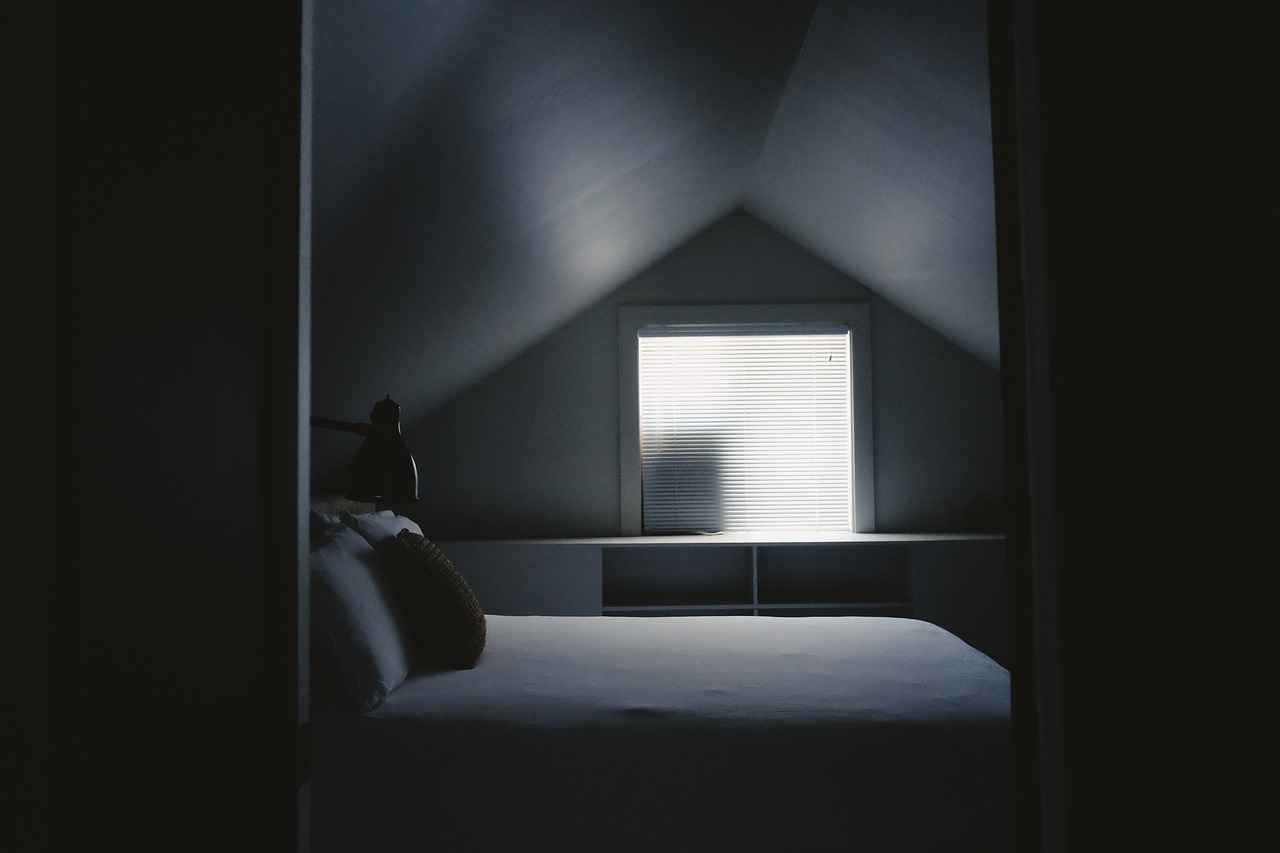
Customization Options for Personalization
In today’s rapidly evolving market, consumers are increasingly seeking personalized bed designs that resonate with their individual styles and preferences. This shift towards customization is not merely a trend; it represents a fundamental change in how people approach their sleeping environments. As the demand for unique and tailored products grows, manufacturers are stepping up to offer a variety of options that cater to diverse tastes and needs.
- Tailored Dimensions and Styles: One of the most significant aspects of bed customization is the ability to choose dimensions and styles that fit perfectly into any bedroom. Consumers can select from a range of sizes, including twin, queen, king, and even custom dimensions, ensuring that their bed complements the layout of their room. This tailored approach enhances overall satisfaction, as buyers can avoid the frustration of finding a bed that meets their specific space requirements.
- Choice of Fabrics and Finishes: Another key element of bed customization is the selection of fabrics and finishes. Consumers can choose from various materials, including luxurious linens, durable synthetics, and eco-friendly options. Additionally, the choice of finishes, such as wood stains and upholstery colors, allows individuals to create a unique aesthetic that harmonizes with their existing bedroom décor. This level of personalization transforms the bed into a statement piece that reflects the owner’s style.
- Personalized Accessories: Beyond the bed frame and mattress, customization extends to accessories such as headboards, bedding, and decorative pillows. Consumers can select designs that align with their personal taste, whether they prefer minimalist styles or bold patterns. This attention to detail ensures that every aspect of the bed contributes to a cohesive and inviting bedroom atmosphere.
- Functional Add-Ons: The trend towards customization also includes functional add-ons that enhance the bed’s usability. Options such as built-in storage drawers, adjustable bases, and integrated lighting can be tailored to meet specific needs. These features not only maximize space but also provide added convenience, making the bed a multifunctional piece of furniture.
As consumers become more invested in their living spaces, the desire for personalized bed designs continues to gain momentum. This movement reflects a broader trend towards individuality in home décor, where people seek to create environments that are not only functional but also deeply personal. By offering a wide array of customization options, manufacturers can cater to this growing demand, ensuring that every consumer finds a bed that is truly their own.
In conclusion, the shift towards customization in bed design is reshaping the industry landscape. As consumers increasingly prioritize personalized experiences, manufacturers are responding by providing diverse options that cater to individual tastes and preferences. This trend not only enhances customer satisfaction but also fosters a deeper connection between consumers and their sleeping environments.
Tailored Dimensions and Styles
In today’s diverse market, in bed design are becoming increasingly essential for consumers seeking to create their ideal sleeping environment. With a wide range of options available, individuals can now find beds that perfectly fit their unique space and personal taste. This customization not only enhances aesthetic appeal but also significantly improves overall satisfaction with their purchase.
One of the primary advantages of offering beds in various dimensions is the ability to accommodate different room sizes and layouts. For instance, compact apartments may benefit from full or queen-sized beds that maximize space without compromising comfort. Conversely, larger bedrooms can embrace king-sized beds, providing ample room for couples or individuals who enjoy stretching out while they sleep. This flexibility ensures that every consumer can find a bed that suits their specific needs.
Moreover, the variety of styles available allows consumers to express their personal preferences. From modern minimalist designs to traditional ornate styles, the options are vast. This diversity enables individuals to select beds that not only serve as functional furniture but also as statement pieces that enhance the overall decor of the room.
- Modern Styles: Characterized by clean lines and a sleek finish, modern beds often feature materials like metal and glass, appealing to those who appreciate contemporary aesthetics.
- Rustic Designs: Made from reclaimed wood or featuring distressed finishes, rustic beds bring warmth and character, perfect for creating a cozy atmosphere.
- Luxury Options: Upholstered beds with plush fabrics and intricate detailing offer a touch of elegance, catering to consumers looking for a more opulent bedroom setting.
In addition to aesthetic considerations, the customization of bed dimensions and styles also plays a crucial role in enhancing comfort. For example, adjustable bed frames allow users to modify the height and angle of their sleeping position, which can be particularly beneficial for those with specific health concerns. This adaptability ensures that every individual can find their perfect sleeping posture, promoting better sleep quality and overall well-being.
Another significant aspect of tailored bed designs is the choice of fabric and finish. Consumers can select from a range of materials, such as cotton, linen, or synthetic blends, to create a unique look that complements their bedroom decor. Additionally, various finishes—ranging from matte to glossy—allow for further personalization, making the bed a focal point within the space.
As the demand for customized solutions continues to grow, manufacturers are increasingly offering bespoke options, allowing consumers to specify not only the dimensions and style but also additional features such as built-in storage or integrated lighting. This level of personalization ensures that the bed meets all functional requirements while also reflecting the owner’s style.
In conclusion, the ability to choose tailored dimensions and styles in bed design is revolutionizing the way consumers approach their sleeping arrangements. By offering a plethora of options, manufacturers are empowering individuals to create personalized spaces that enhance both comfort and aesthetic appeal. As we move forward into 2025, this trend is expected to grow, with more innovations and options becoming available to meet the diverse needs of consumers.
Choice of Fabrics and Finishes
When it comes to creating a personalized sanctuary in your bedroom, the choice of fabrics and finishes plays a crucial role. The right materials can transform an ordinary bed into a stunning focal point that reflects your unique style and complements your overall décor. In 2025, consumers are increasingly looking for options that allow them to express their individuality while ensuring comfort and functionality.
One of the most exciting trends is the availability of a wide range of textiles that cater to different tastes and preferences. From luxurious velvet to breathable linen, the variety of fabric options allows users to create a bed that not only looks good but also feels good. For instance, velvet adds a touch of elegance and sophistication, while linen offers a more relaxed and casual vibe. The choice between these materials can significantly influence the ambiance of the bedroom.
Moreover, the color palette associated with these fabrics is equally important. Neutral tones such as beige, gray, and white remain popular, as they create a calming atmosphere conducive to relaxation. However, bold colors and patterns are also making a comeback, allowing consumers to make a statement with their bed design. By selecting vibrant hues or unique prints, individuals can infuse their personality into their sleeping space.
In addition to fabric choices, the finishes of the bed frame and headboard play a vital role in the overall aesthetic. Options such as matte, glossy, or textured finishes can significantly alter the look of the bed. For example, a matte finish can provide a modern and understated appearance, while a glossy finish can add a touch of glamour. Textured finishes, such as brushed metal or distressed wood, can bring warmth and character to the design.
Customization is another significant aspect of modern bed design. Many manufacturers now offer tailored options that allow consumers to choose not only the fabric and finish but also the dimensions and style of the bed. This flexibility ensures that the bed fits perfectly within the existing bedroom layout, catering to both aesthetic and practical needs. For instance, a platform bed with built-in storage can be an excellent choice for smaller spaces, combining functionality with style.
- Fabric Types:
- Velvet
- Linen
- Cotton
- Microfiber
- Finishes:
- Matte
- Glossy
- Textured
Furthermore, the growing trend towards sustainability has led to an increase in the availability of eco-friendly fabrics. Consumers are now more conscious of their choices, seeking materials that are not only aesthetically pleasing but also environmentally responsible. Fabrics made from organic cotton or recycled materials are becoming increasingly popular, allowing individuals to design their beds with a clear conscience.
Ultimately, the in bed design is about more than just aesthetics; it’s about creating a space that resonates with your personal style and meets your comfort needs. As we move into 2025, the emphasis on customization and sustainability will continue to shape the bed design landscape, offering consumers a plethora of options to choose from.

Health and Wellness Features in Bed Design
In recent years, the evolution of bed design has transcended beyond mere aesthetics and comfort. Today, modern beds are being meticulously crafted with a focus on health and wellness, aiming to enhance the quality of sleep and overall well-being of users. This shift in design philosophy reflects a growing awareness of the importance of sleep in maintaining physical and mental health. Here, we delve into the innovative features that are transforming beds into wellness-centric havens.
One of the most significant advancements in bed design is the introduction of adjustable bases. These versatile foundations allow users to customize their sleeping positions, which can be particularly beneficial for those with specific health concerns such as sleep apnea or chronic pain. By elevating the head or feet, individuals can find their ideal posture, reducing discomfort and promoting deeper, more restorative sleep.
Research shows that an adjustable base can lead to improved sleep quality. By allowing users to find their optimal sleeping position, these bases help alleviate pressure points and reduce tossing and turning throughout the night. As a result, users often report feeling more refreshed and energized upon waking.
Another essential feature in modern bed design is the use of hypoallergenic materials. These materials are specifically engineered to minimize allergens, dust mites, and other irritants that can disrupt sleep. Beds constructed with hypoallergenic fabrics and foams are particularly advantageous for individuals who suffer from allergies or asthma.
Incorporating hypoallergenic materials not only improves comfort but also enhances the overall air quality in the bedroom. This is crucial, as a cleaner sleep environment can significantly impact respiratory health and overall well-being.
Today’s beds are increasingly equipped with smart technology that monitors sleep patterns and provides valuable insights. These beds can track metrics such as sleep duration, cycles, and disturbances, helping users understand their sleep habits better.
By analyzing sleep data, users can make informed adjustments to their sleep environment, such as modifying room temperature or light exposure, leading to better rest and overall wellness. This data-driven approach empowers individuals to take control of their sleep health.
Temperature regulation is another critical aspect of modern bed design. Many beds now incorporate advanced cooling and heating technologies to help maintain an optimal sleep temperature. This feature is particularly valuable for those who experience night sweats or discomfort due to fluctuating temperatures.
With adjustable temperature settings, users can create a comfortable sleeping environment year-round, enhancing their overall sleep experience and promoting better health.
Modern beds are also designed with ergonomic support systems that cater to the natural alignment of the body. These systems are essential for preventing sleep-related issues such as back pain and neck strain.
By providing the right support where it’s needed most, these beds encourage a healthy sleeping posture, which is vital for long-term health and wellness.
In conclusion, the integration of health and wellness features in modern bed design represents a significant evolution in how we approach sleep. By prioritizing comfort, support, and technology, these beds not only enhance the quality of sleep but also contribute to the overall well-being of users. As we continue to understand the critical role sleep plays in our health, the demand for such innovative designs is likely to grow, making the bedroom a sanctuary for restorative rest.
Adjustable Bases for Comfort
In recent years, the demand for better sleep solutions has led to significant innovations in bed design. One of the most notable advancements is the introduction of adjustable bed bases. These versatile bases are designed to cater to the unique needs of individual sleepers, providing a customizable experience that can greatly enhance comfort and overall sleep quality.
Adjustable bed bases allow users to modify the position of their mattress, enabling them to find their ideal sleeping position. By elevating the head or foot of the bed, these bases can help alleviate pressure points, reduce discomfort, and enhance circulation, making them particularly beneficial for those with specific health concerns such as:
- Chronic pain
- Acid reflux
- Sleep apnea
- Arthritis
Investing in an adjustable bed base can lead to a multitude of benefits:
- Improved Sleep Quality: By allowing users to find the most comfortable position, adjustable bases can lead to deeper and more restorative sleep.
- Enhanced Comfort: Whether reading, watching TV, or sleeping, these beds provide the flexibility to adjust to various activities.
- Reduced Snoring: Elevating the head can help open airways, reducing snoring and improving breathing during sleep.
One of the standout features of adjustable bed bases is their customizability. Users can often choose from a range of settings to find their preferred angle, making it easier to accommodate personal comfort preferences. Many models also offer built-in massage features, adding another layer of relaxation that can help ease tension and promote better sleep.
Another advantage of adjustable bed bases is their compatibility with a variety of mattress types, including memory foam, latex, and hybrid models. This versatility allows consumers to select a mattress that meets their comfort needs while still benefiting from the adjustable features of the base.
Modern adjustable bed bases often come equipped with advanced technology, such as smart features that allow users to control their bed via smartphone apps or remote controls. Some models even include sleep tracking capabilities, providing insights into sleep patterns and helping users make informed adjustments to improve their rest.
For individuals with health concerns, adjustable bed bases can be a game-changer. By allowing users to elevate their legs or upper body, these bases can help alleviate symptoms associated with various conditions, enhancing overall well-being. For example, elevating the legs can reduce swelling and improve circulation, while raising the upper body can aid in digestion and minimize discomfort from heartburn.
In summary, adjustable bed bases represent a significant advancement in sleep technology, offering users the ability to tailor their sleeping experience to their individual needs. With benefits that extend beyond mere comfort, these bases can play a crucial role in promoting better sleep quality and overall health. As consumers continue to prioritize wellness in their purchasing decisions, the popularity of adjustable bed bases is likely to grow, making them a key trend in the future of bed design.
Hypoallergenic Materials
In recent years, the demand for in bed construction has gained significant traction, particularly among those suffering from allergies or respiratory issues. These materials are specifically designed to minimize allergens, thus creating a healthier sleep environment. This article explores the benefits and various types of hypoallergenic materials, as well as their impact on air quality and overall health.
refer to substances that are less likely to cause allergic reactions. They are crafted to reduce the presence of common allergens such as dust mites, mold, and pet dander. By utilizing these materials in bed construction, manufacturers aim to create sleeping surfaces that are safer and more comfortable for individuals prone to allergies.
- Memory Foam: High-density memory foam is known for its ability to resist dust mites and mold. Its closed-cell structure prevents allergens from penetrating the surface, making it a popular choice for mattresses.
- Organic Cotton: Unlike conventional cotton, organic cotton is grown without harmful pesticides and chemicals. This natural fiber is breathable and less likely to harbor allergens, enhancing sleep quality.
- Bamboo Fabric: Bamboo-derived materials possess natural antibacterial properties and are resistant to mold and mildew. This makes them an excellent choice for bedding and mattress covers.
- Latex: Natural latex is another hypoallergenic option, as it is resistant to dust mites and mold. It also offers excellent support and durability, making it a favorite among consumers.
Investing in a bed made from hypoallergenic materials can lead to numerous benefits:
- Allergen Reduction: By minimizing allergens in the sleeping environment, hypoallergenic beds can significantly reduce allergy symptoms, allowing for a more restful night’s sleep.
- Improved Air Quality: Hypoallergenic materials often have breathable properties that enhance airflow, reducing humidity and the likelihood of mold growth. This leads to better indoor air quality.
- Enhanced Comfort: Many hypoallergenic materials, such as memory foam and latex, provide superior comfort and support, catering to various sleeping positions and preferences.
Hypoallergenic beds are particularly beneficial for:
- Individuals with allergies or asthma, who may experience aggravated symptoms due to dust mites and other common allergens.
- Parents of young children, as children are often more sensitive to allergens and require a safe sleeping environment.
- Pet owners, who may want to minimize the impact of pet dander on their sleep quality.
When selecting a hypoallergenic bed, consider the following factors:
- Material Composition: Look for beds made from certified hypoallergenic materials, ensuring they meet industry standards.
- Certifications: Check for certifications like OEKO-TEX or GOTS, which indicate the absence of harmful substances.
- Maintenance: Choose materials that are easy to clean and maintain, as regular cleaning can help reduce allergens even further.
In conclusion, opting for a bed constructed with hypoallergenic materials is a proactive step toward improving sleep quality and overall health. By reducing allergens and enhancing air quality, these beds provide a sanctuary for those affected by allergies, making them a worthwhile investment for a healthier lifestyle.
Frequently Asked Questions
- What materials are trending in bed design for 2025?
In 2025, expect to see innovative materials like sustainable woods and advanced composites that enhance durability and aesthetics while providing maximum comfort.
- How do smart beds improve sleep quality?
Smart beds come equipped with technology that monitors sleep patterns and adjusts firmness, ensuring personalized comfort that caters to individual needs for better health and wellness.
- Are minimalist designs still popular?
Absolutely! Minimalist designs are trending due to their clean lines and simplicity, offering functionality without sacrificing style, perfect for modern aesthetics.
- What sustainable practices are being used in bed design?
Manufacturers are increasingly using recycled materials and ethical sourcing practices, making eco-friendly beds a responsible choice for consumers who care about the environment.
- Can I customize my bed design?
Yes! Many brands now offer customization options, allowing you to choose dimensions, styles, fabrics, and finishes that reflect your personal taste and fit your space perfectly.
- What health features should I look for in a modern bed?
Look for adjustable bases for comfort and hypoallergenic materials that help reduce allergens and improve air quality, making your bed a healthier sleeping environment.
